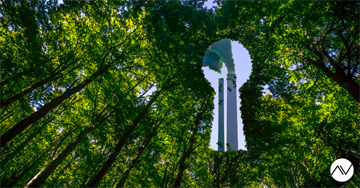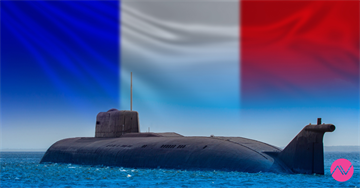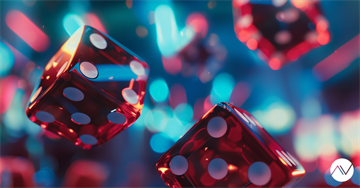
L'Oréal: Beauty Meets Powerful Competitors
In the spring, LVMH announced a series of management reorganisations in its Perfumes & Cosmetics division, while Kering not only appointed a former Estée Lauder executive as CEO of its newly-created Kering Beauté division, but it also snapped up The Creed, a niche British fragrance brand.
The global beauty market continued to grow (+6% yoy in 2022) despite challenges (war in Ukraine and COVID-19-related disruptions in China). Its impressive resilience and huge potential are prompting luxury players to grab a slice of this market.
Can L'Oréal defend its leadership in the beauty market and face luxury players’ financial muscle?

L’Oréal posted another consensus-beating half year 2023 performance, driven by the best-ever half year growth of the Consumer Product division and the unwavering dynamic of the Dermatological beauty division. The group pointed out that the strong growth of the dermo-cosmetics business has been particularly boosted by the strong demand in emerging markets, especially growth in mainland China, which was three times that of the market.
However, the operating margin of the L’Oréal luxe division contracted by 80bp yoy. The group’s travel activities have been impacted by the anticipated uneasy comparisons and the new Chinese regulation in Hainan Island.
A promising dermo-cosmetics market
The beauty market has long been segmented into cosmetics, skincare, fragrance, and hair care markets, with skincare accounting for the largest share and consistently ahead of the other segments in terms of profitability and growth potential. While the Skincare business has high barriers and requires heavy investment in R&D, L’Oréal not only maintained its leading position in the premium skincare market with Lancôme but also built an unrivalled position in the booming dermo-cosmetics market.
In the post-pandemic era, the culture of dermo-cosmetics exploded due to the dramatic increase in consumer awareness of health and wellness.
In 2022, around 2.1bn people across the globe are said to suffer from skin issues, with ageing, wrinkles, dryness, and acne being the main problems. Although more expensive, dermo-cosmetics are more effective and safer than traditional beauty products, making them highly trusted by consumers. The size of the global dermo-cosmetic market surpassed €47bn and is expected to grow at a CAGR of 9.7% between 2023 to 2032. L’Oréal’s dermatological beauty division has grown by nearly 2.5x the market in 2022, with its market share exceeding 14%, almost double that of the runner-up. La Roche Posay remains its largest dermo-cosmetics brand, with more than 6% of the market.
The Chinese market accounts for almost 20% of the global dermo-cosmetics market and continues to grow at more than twice the global rate. The high-end market is still dominated by the international brands (chart below) in China, most of them owned by L’Oréal (in pink).

Rising demand for functional beauty products such as anti-ageing, anti-wrinkle, and sun protection, with two-thirds of Chinese using sun protection on a daily basis, will continue to drive the growth of the dermo-cosmetics market in China. L’Oréal will continue to enjoy satisfying growth in the Chinese dermo-cosmetic market thanks to its well-diversified portfolio.
Short-term pain in Hainan
The closure of China's borders for three years due to the pandemic transformed Hainan, China's only major island, into one of the world's leading travel retail engines over the past three years. The island's unique location and tropical climate made it a duty-free shopping paradise for Chinese travellers during the pandemic. Particularly for beauty products, electronics, alcohol and tobacco, which are highly taxed and can be carried easily (e.g. Lancôme’s most popular lotion is sold for RMB430 for 400ml on its official flagship on Tmall vs. RMB310 in one of Hainan’s duty-free shops).
Although Hainan's retail business was hit by several COVID-19-related lockdowns last year, it has bounced back quickly since the lifting of the COVID-19-related restrictions earlier this year. According to the Hainan Provincial Department of Commerce, the accumulated sales from the island’s 12 duty-free shops increased by 20.69% yoy to RMB2.57bn (€326m) during the Chinese New Year holiday (21-27 January 2023).
Hainan's huge potential has made it an unmissable market for luxury brands and beauty giants. However, the island has been the subject of much debate recently. The explosion of Daigou activities (individuals or groups of exporters outside China purchasing goods for Chinese customers through illegal ways) and the promotional events offered by certain individual shopping malls have affected the global pricing policies of international brands and the images of the brands. To preserve the value of brands better and standardise the commercial activities, the Hainan authorities implemented “anti-smuggling measures” in May to crack down on Daigou activities, and several retail staff in Hainan have been arrested to underline the seriousness of the initiative. This tighter control has had several impacts on L’Oréal’s activity during the first half and may continue to have an impact on inventory in the coming months.
We believe a standardised trading environment could maintain the brands’ long-term desirability and price management, over the longer term, the “anti-smuggling measures”, is only a short-term pain for the group.
Expensive leadership
Hainan’s hiccup may continue to cause inventory volatility for the group for the months ahead, weighing on margins. But we believe L'Oréal's dominance of the skincare market, particularly the booming dermo-cosmetics market, and its industry-leading 360-degree global distribution channels will help it outperform the market, even in the face of powerful rivals with ample pockets like LVMH and Kering.
However, at 34x its FY23 earnings, L’Oréal’s valuation is still on another planet. Our fundamentals metrics are struggling to show any significant upside.
The global beauty market continued to grow (+6% yoy in 2022) despite challenges (war in Ukraine and COVID-19-related disruptions in China). Its impressive resilience and huge potential are prompting luxury players to grab a slice of this market.
Can L'Oréal defend its leadership in the beauty market and face luxury players’ financial muscle?
L’Oréal posted another consensus-beating half year 2023 performance, driven by the best-ever half year growth of the Consumer Product division and the unwavering dynamic of the Dermatological beauty division. The group pointed out that the strong growth of the dermo-cosmetics business has been particularly boosted by the strong demand in emerging markets, especially growth in mainland China, which was three times that of the market.
However, the operating margin of the L’Oréal luxe division contracted by 80bp yoy. The group’s travel activities have been impacted by the anticipated uneasy comparisons and the new Chinese regulation in Hainan Island.
A promising dermo-cosmetics market
The beauty market has long been segmented into cosmetics, skincare, fragrance, and hair care markets, with skincare accounting for the largest share and consistently ahead of the other segments in terms of profitability and growth potential. While the Skincare business has high barriers and requires heavy investment in R&D, L’Oréal not only maintained its leading position in the premium skincare market with Lancôme but also built an unrivalled position in the booming dermo-cosmetics market.
In the post-pandemic era, the culture of dermo-cosmetics exploded due to the dramatic increase in consumer awareness of health and wellness.
In 2022, around 2.1bn people across the globe are said to suffer from skin issues, with ageing, wrinkles, dryness, and acne being the main problems. Although more expensive, dermo-cosmetics are more effective and safer than traditional beauty products, making them highly trusted by consumers. The size of the global dermo-cosmetic market surpassed €47bn and is expected to grow at a CAGR of 9.7% between 2023 to 2032. L’Oréal’s dermatological beauty division has grown by nearly 2.5x the market in 2022, with its market share exceeding 14%, almost double that of the runner-up. La Roche Posay remains its largest dermo-cosmetics brand, with more than 6% of the market.
The Chinese market accounts for almost 20% of the global dermo-cosmetics market and continues to grow at more than twice the global rate. The high-end market is still dominated by the international brands (chart below) in China, most of them owned by L’Oréal (in pink).
Rising demand for functional beauty products such as anti-ageing, anti-wrinkle, and sun protection, with two-thirds of Chinese using sun protection on a daily basis, will continue to drive the growth of the dermo-cosmetics market in China. L’Oréal will continue to enjoy satisfying growth in the Chinese dermo-cosmetic market thanks to its well-diversified portfolio.
Short-term pain in Hainan
The closure of China's borders for three years due to the pandemic transformed Hainan, China's only major island, into one of the world's leading travel retail engines over the past three years. The island's unique location and tropical climate made it a duty-free shopping paradise for Chinese travellers during the pandemic. Particularly for beauty products, electronics, alcohol and tobacco, which are highly taxed and can be carried easily (e.g. Lancôme’s most popular lotion is sold for RMB430 for 400ml on its official flagship on Tmall vs. RMB310 in one of Hainan’s duty-free shops).
Although Hainan's retail business was hit by several COVID-19-related lockdowns last year, it has bounced back quickly since the lifting of the COVID-19-related restrictions earlier this year. According to the Hainan Provincial Department of Commerce, the accumulated sales from the island’s 12 duty-free shops increased by 20.69% yoy to RMB2.57bn (€326m) during the Chinese New Year holiday (21-27 January 2023).
Hainan's huge potential has made it an unmissable market for luxury brands and beauty giants. However, the island has been the subject of much debate recently. The explosion of Daigou activities (individuals or groups of exporters outside China purchasing goods for Chinese customers through illegal ways) and the promotional events offered by certain individual shopping malls have affected the global pricing policies of international brands and the images of the brands. To preserve the value of brands better and standardise the commercial activities, the Hainan authorities implemented “anti-smuggling measures” in May to crack down on Daigou activities, and several retail staff in Hainan have been arrested to underline the seriousness of the initiative. This tighter control has had several impacts on L’Oréal’s activity during the first half and may continue to have an impact on inventory in the coming months.
We believe a standardised trading environment could maintain the brands’ long-term desirability and price management, over the longer term, the “anti-smuggling measures”, is only a short-term pain for the group.
Expensive leadership
Hainan’s hiccup may continue to cause inventory volatility for the group for the months ahead, weighing on margins. But we believe L'Oréal's dominance of the skincare market, particularly the booming dermo-cosmetics market, and its industry-leading 360-degree global distribution channels will help it outperform the market, even in the face of powerful rivals with ample pockets like LVMH and Kering.
However, at 34x its FY23 earnings, L’Oréal’s valuation is still on another planet. Our fundamentals metrics are struggling to show any significant upside.
Subscribe to our blog

Green splurge keeping BP in the slow lane

A deep dive into French state listed assets worth c.€78bn

From losing ~6% in a single day to outperforming a weak sector, know why the stock is still worth a ...